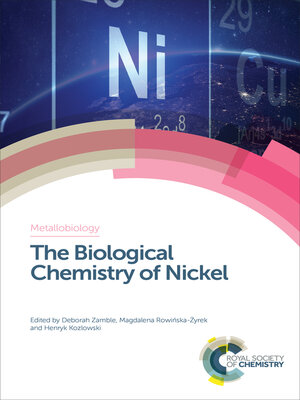
Sign up to save your library
With an OverDrive account, you can save your favorite libraries for at-a-glance information about availability. Find out more about OverDrive accounts.
Find this title in Libby, the library reading app by OverDrive.



Search for a digital library with this title
Title found at these libraries:
| Library Name | Distance |
|---|---|
| Loading... |
Metal ions play key roles in biology. Many are essential for catalysis, for electron transfer and for the fixation, sensing, and metabolism of gases. Others compete with those essential metal ions or have toxic or pharmacological effects.
This book is structured around the periodic table and focuses on the control of metal ions in cells. It addresses the molecular aspects of binding, transport and storage that ensure balanced levels of the essential elements. Organisms have also developed mechanisms to deal with the non-essential metal ions. However, through new uses and manufacturing processes, organisms are increasingly exposed to changing levels of both essential and non-essential ions in new chemical forms. They may not have developed defenses against some of these forms (such as nanoparticles).
Many diseases such as cancer, diabetes and neurodegeneration are associated with metal ion imbalance. There may be a deficiency of the essential metals, overload of either essential or non-essential metals or perturbation of the overall natural balance.
This book is the first to comprehensively survey the molecular nature of the overall natural balance of metal ions in nutrition, toxicology and pharmacology. It is written as an introduction to research for students and researchers in academia and industry and begins with a chapter by Professor R J P Williams FRS.







